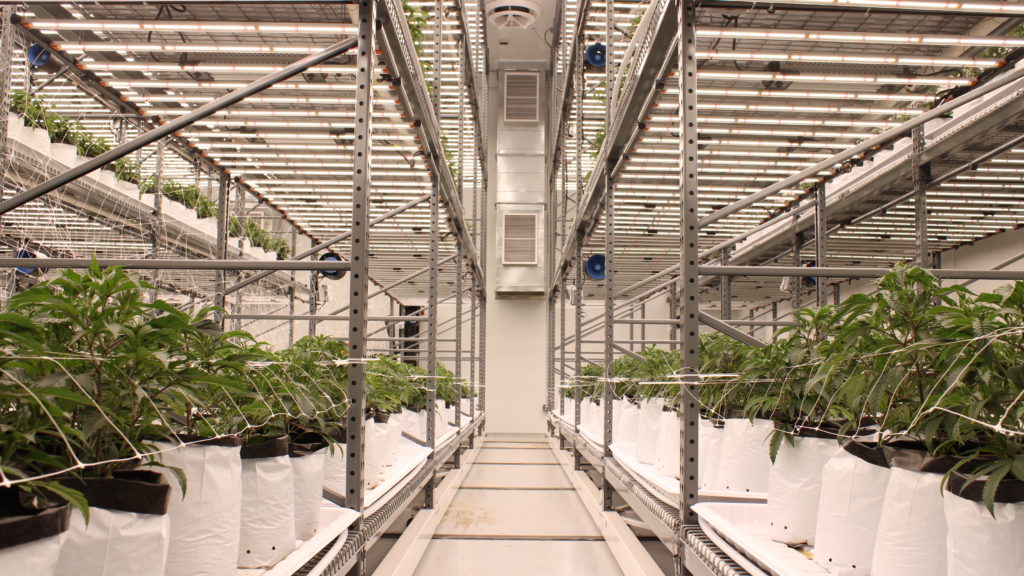Climate change caused by carbon emissions is one of the greatest threats to the environment. Scientists and environmentalists agree that the current models for industry are outdated and need to be adjusted in order for sustainable energy to move forward.
While cannabis carries an inherent association with peace-loving hippy culture of environmental consciousness, the cannabis industry is one of the most unsustainable industries in the country, responsible for emitting greenhouse gases only on par with data storage centers. The amount of energy needed to run a single grow facility is staggering as high-powered, inefficient lights, fans, and HVAC systems run 24 hours a day, seven days a week.
Yet little attention has been focused on the tremendous amount of energy devoured by commercial grow facilities in the state, an oversight, which ignored, will be a much bigger problem to fix down the road. Reversing current practices will require proactive individuals with innovative ideas – not just deep pockets. One of those individuals is Ed Dow, CEO of Solar Therapeutics in Somerset.
Dow’s engineering background and clear vision can only be matched by his uncanny ability to make things happen without the need for outside corporate funding, proving it’s possible to enter the cannabis industry with a new model: solar-powered and self-sustaining.

(Courtesy Photo)
“You have to keep in mind that cannabis plants are complete power hogs,”
explains Dow. “The indoor cannabis industry is pushing out tons of emissions that no one is talking about. I saw this unsustainable industry and realized I could approach it from a different angle.”
Solar Therapeutics is a massive complex housing an adult-use cannabis retail shop and a commercial grow facility. The 42,000-square-foot facility is powered by 70,000-square-feet of solar panels on the building’s roof and spread throughout the property. The company celebrated its grand opening in September 2019 and employs around 50 people
It is the largest solar cannabis production facility to implement its methods of sustainability and green engineering. At its heart is the facility’s own micro grid capable of producing 5 megawatts of power, enough to power tens of thousands of homes.
Dow’s green engineering doesn’t stop with simply powering the building by means of the sun. The micro grid also traps its own excess heat, which is then used to warm up the building and its employees. Liquid chillers capture the cold outside air to naturally cool the grow rooms and bring in fresh air to the plants, massive water holding tanks are able to recapture roughly 9,000 out of every 10,000 gallons used. Nothing is wasted. There is thought put into every inch of the facility’s design.
This, combined with all LED lighting, allows the company to cut its energy use in half, cutting down production costs and sparing damage to the environment.
“Water reclamation and LED lighting are the two most important steps in becoming more efficient,” says Dow. “Unlike high-pressure sodium and metal halide lamps whose beam needs directing and height constantly adjusted because of the heat they produce in proximity to the plants, LEDs hit the plants directly, and require no height adjustment.”
To Dow, “Redundancy is key.”
Bordered by Mount Hope and Narragansett Bay, the town of Somerset was infamously known for the condemned Brayton Point power plant, the largest coal-fired generating station in New England. On April 27, 2019 the iconic towers of the contaminated plant were imploded, a symbolic moment in forecasting the city’s future, as it is certain to be a much cleaner one.
And because it generates all its own energy, Solar Therapeutics has already received almost a million dollars back in rebates from National Grid and Liberty Utilities.
If all of this isn’t enough to convince growers to consider going solar, maybe the promise of backup power will convince them. Losing power for a day would be devastating to a cannabis grow facility – so backup power is worth a true amount of dollars in the cannabis industry.
In an industry plagued by excessive waste and environmentally unfriendly practices, Solar Therapeutics demonstrates that it’s possible to produce large scale cannabis in a sustainable manner.
“We’re hoping others begin to follow suit,” said Dow. “We have a great opportunity within the cannabis space, but we have to keep in mind that being a responsible corporate citizen is mission critical if we’re going to sustain the industry.”
For more information, visit Solar Therapeutics, www.solarthera.com

























